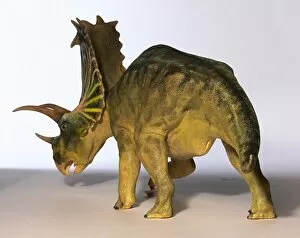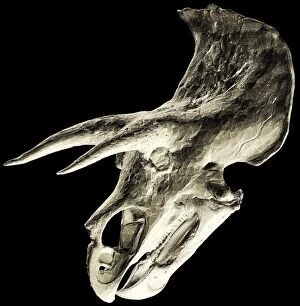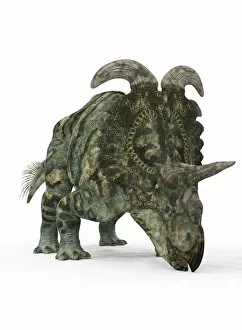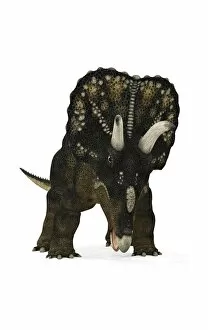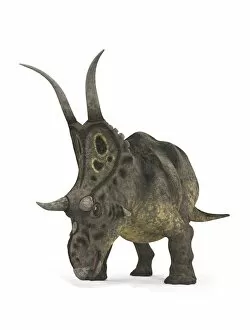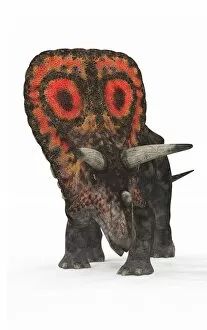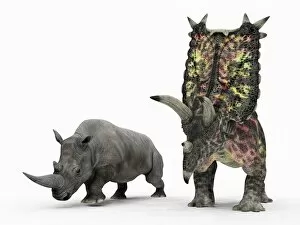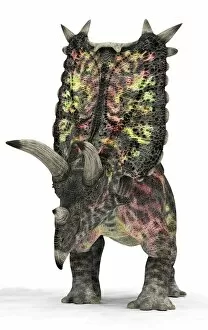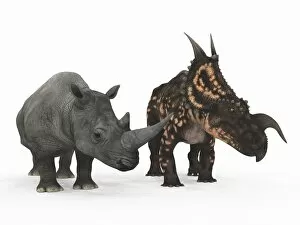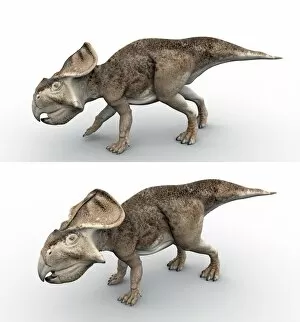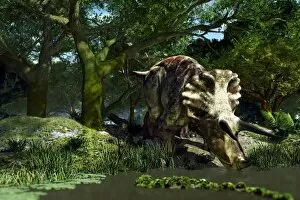Neck Frill Collection
The majestic neck frill of cerapod dinosaurs, resembling that of a rhino, was truly a sight to behold
For sale as Licensed Images
Choose your image, Select your licence and Download the media
The majestic neck frill of cerapod dinosaurs, resembling that of a rhino, was truly a sight to behold. As we gaze upon the model of the Pentaceratops dinosaur from a 3/4 angle, facing away, its intricate and elaborate frill commands our attention. This unique feature served as both protection and display for these Cretaceous giants. Examining the Triceratops dinosaur skull reveals the remarkable complexity of their neck frills. These bony structures were adorned with impressive patterns and spikes, making them instantly recognizable in the prehistoric world. The sheer size and intricacy of these frills are awe-inspiring. As we explore further into this ancient realm, other fascinating species come into view. The Albertaceratops dinosaur showcases its own distinct variation on the neck frill design while maintaining an air of grandeur. Meanwhile, the Zuniceratops dinosaur surprises us with its smaller yet equally captivating adornment. Comparisons between Triceratops dinosaurs and modern-day rhinos highlight intriguing similarities in their formidable presence and defensive capabilities. Both possess robust bodies accompanied by powerful horns or frills that serve as potent weapons against potential threats. Nedoceratops dinosaurs join this diverse array with their own unique take on neck frills—each individual displaying variations in shape and size that contribute to their overall charm. Exploring the world of cerapod dinosaurs unravels an astonishing variety within their iconic neck frills. From Pentaceratops to Triceratops to Nedoceratops—their magnificent displays captivate our imagination while shedding light on one of nature's most extraordinary evolutionary adaptations.



